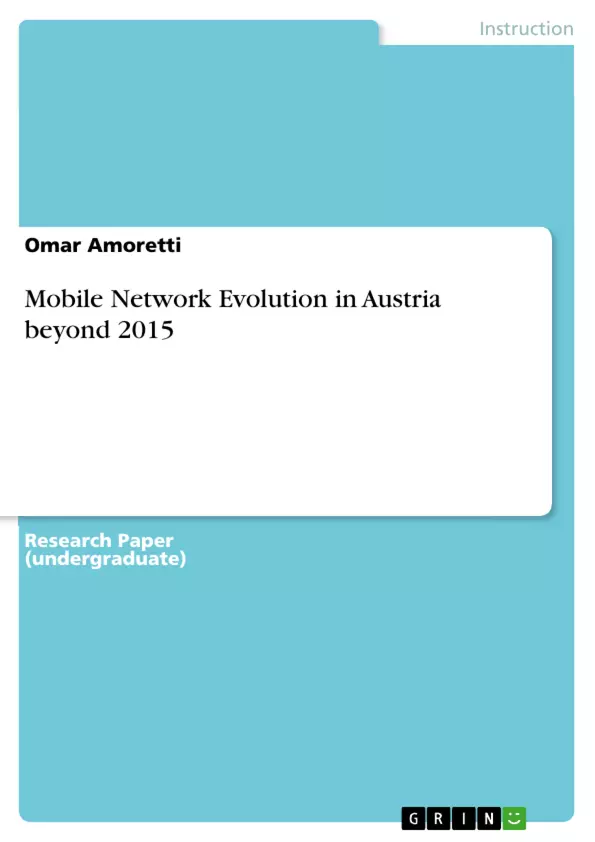The information and communications sector is experiencing a major transformation leading to a quick emerging novel industry landscape. The well-known business model of telecommunication operators is continuously being affected by the intensifying struggle between operators. These aspects do not only involve an increasing saturation within the communications market, but also contributes to a rising substitution behavior triggered by well-established Internet businesses.
In this context, the Ovum Global Telecoms Market Outlook 2013-2018 predicts for the coming five years a global increase of mobile lines of about 25% (e.g. 8.1 billion in total by 2018, the relevant growth coming primarily from emerging economies). However, the outlook for the fixed-network market does not look that promising: a 5% reduction in voice revenues for the period 2012 - 2018 is expected. Other important features that influence the economic achievement of a telecommunications provider are represented by the current regulatory provisions along with the price level the provider can realize. Obviously, this price level generally mirrors the customer behavior and the development (stage) of a particular market.
In this sense, the mobile industry has certainly the potential to set free even superior benefits and contribute to meets the EU sustainability and innovation targets defined in the EU 2020 strategy [14]. In fact, the European mobile industry is no longer restricted to the provision of basic voice and data services, but is rather taking to an active role in offering high-speed broadband access and (data) connectivity. This involves a new third wave of connectivity (e.g. beyond tablets and laptops), comprising cars and buildings and having undoubtedly the prospect of connecting almost anything and anyone (the “Connected Life” as the GSMA denotes it).
Inhaltsverzeichnis (Table of Contents)
- Introduction
- European Mobile Markets
- Regulatory Approach
- The Mobile Market in Austria
- Mobile Core Network Evolution - LTE Evolution Roadmap
- The Evolved Packet Core
- From LTE to LTE-A: (Economic) motivations and constraints
- LTE
- LTE-Advanced
- Carrier Aggregation
- Relay Nodes
- Advanced Multiple Input Multiple Output (MIMO) schemes
- Looking ahead: Requirements for future mobile networks
- Austria beyond 2015: Towards the future mobile network
- LTE-B Key features and requirements
- LTE-A to LTE-B: Potential Benefits and Applications
- Conclusion
Zielsetzung und Themenschwerpunkte (Objectives and Key Themes)
This document explores the evolution of mobile networks in Austria, focusing on the transition from LTE to LTE-A and beyond. It aims to analyze the economic motivations, constraints, and potential benefits of this evolution, examining the role of regulation, market trends, and technological advancements.
- The economic challenges and opportunities facing the European mobile market
- The evolution of mobile core networks and the transition to LTE-A and beyond
- The technological advancements driving mobile network evolution, including carrier aggregation, relay nodes, and MIMO schemes
- The key features and requirements of future mobile networks, particularly LTE-B
- The potential benefits and applications of LTE-A and LTE-B technologies
Zusammenfassung der Kapitel (Chapter Summaries)
The introduction provides an overview of the changing landscape in the information and communications sector, highlighting the challenges and opportunities facing telecommunications operators. It discusses the global growth of mobile lines and the declining fixed-network market, emphasizing the importance of regulatory provisions and price levels. The chapter also introduces the concept of human-centric and connected machine-based networks and the role of LTE in driving innovation and meeting EU sustainability targets.
Chapter 2 focuses on the European mobile market, analyzing its innovative approach and entrepreneurial spirit. It discusses the impact of competition on pricing and penetration rates, highlighting the challenges faced by operators due to market saturation and regulatory activities. The chapter presents data on the growth of mobile data volumes and the decline in traditional revenue streams, emphasizing the need for operators to adapt their business models.
Chapter 3 delves into the evolution of mobile core networks, specifically the transition from LTE to LTE-A. It explores the economic motivations behind this evolution, including the need to reduce costs and improve data speeds. The chapter also discusses the technical aspects of LTE-A, including carrier aggregation, relay nodes, and advanced MIMO schemes, highlighting the advantages and limitations of these technologies.
Chapter 4 looks ahead to the requirements for future mobile networks, focusing on the potential of LTE-B. It discusses the key features and requirements of this technology, exploring its potential benefits and applications. The chapter examines the transition from LTE-A to LTE-B and its implications for operators and consumers.
Schlüsselwörter (Keywords)
Mobile network evolution, LTE, LTE-A, LTE-B, carrier aggregation, relay nodes, MIMO, European mobile market, regulatory approach, market trends, economic motivations, technological advancements, future mobile networks, potential benefits, applications.
- Citar trabajo
- Omar Amoretti (Autor), 2015, Mobile Network Evolution in Austria beyond 2015, Múnich, GRIN Verlag, https://www.grin.com/document/300826



